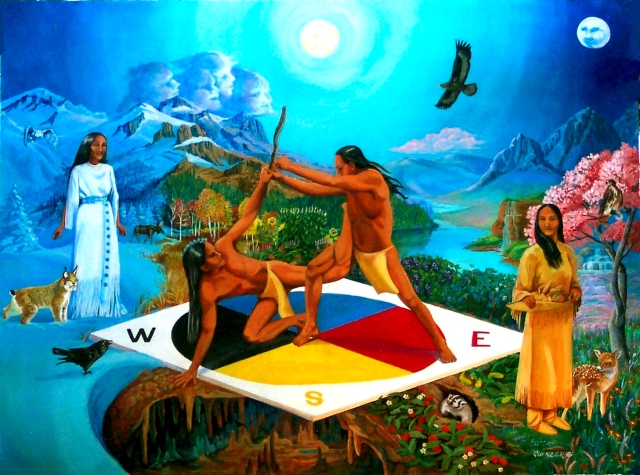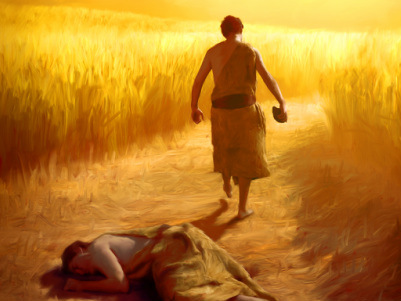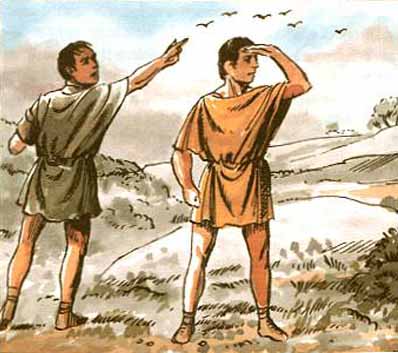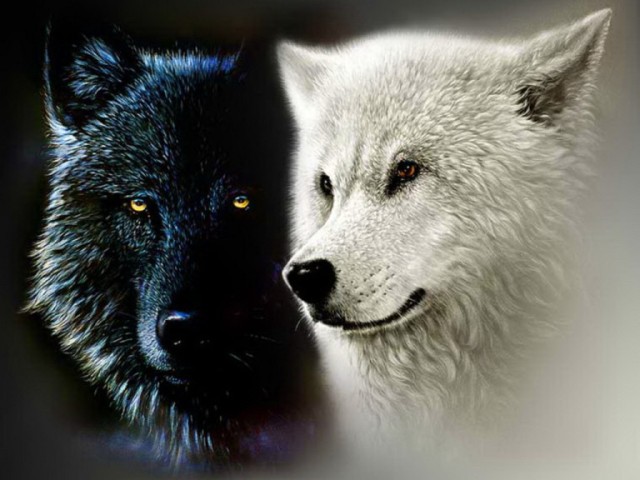(Before It's News)
By Adam J. Pearson
It’s fascinating how many ancient myths and stories feature the motif of a good twin and a bad twin, one who longs to create good things and another who yearns to destroy. This universal, archetypal idea recurs in many ancient cultures, many of which never came into contact with one another… Here are a few examples of narrative manifestations of this motif from Native American, Roman, and Middle Eastern traditions and one from a modern television series.
SPOILER ALERT : This post mentions a spoiler from the ABC TV series Lost. I suggest that you do not read it if you haven’t seen the show, which I highly, highly recommend watching.
In the Haudenosaunee creation story, there is a good-minded twin, who creates good things and is born from his mother, the Sky Woman–the first person in the Earthly realm–through an ordinary vaginal birth. His destructive twin-brother tears his way out of his mother’s side to be born and she bleeds to death in the process; his very birth is his first act of destruction. He goes on to create bad and harmful things.
In the Qur’an, Torah, and Old Testament of the Christian Bible, Cain and Abel are the twin brothers of Adam and Eve, the first people. Cain is a crop farmer and Abel is a shepherd. Cain sacrifices crops to God and Abel sacrifices the firstborn sheep of his flock and some of their fat. God favours Abel’s sacrifice over Cain’s. Out of jealousy, Cain, one of the first people born, kills his brother Abel, and thereby commits the first murder.
In the Ancient Roman foundation story, Romulus and Remus are two twins, sons of the Princess Rhea and the god of war, Mars. Romulus kills his brother Remus and ends up founding the city that would later become Rome. This story is unusual among its ancient counterparts since Romulus is both destructive and creative; he kills his brother, but he also creates a great city.
Interestingly, this ancient mythic motif is echoed in the 2004-2010 television series, Lost. Jacob and his brother, later called the Man in Black, are twins born to a Roman woman named Claudia, who is killed by an unnamed woman after giving birth to them. As children of a Roman woman, the twins echo Romulus and Remus; however, Claudia uses her magic to ‘make it so’ that the Man in Black cannot kill his brother Jacob, despite his desire to do so. Jacob believes that human beings are fundamentally good; the Man in Black believes they are essentially evil and corrupt. Jacob heals; the Man in black kills.

The motif of the good and evil twin expressed in these ancient myths is thus here re-expressed for a new generation in our own modern myth-telling form: film. Perhaps these stories all capture something of the competing universal drives within the human psyche that Sigmund Freud called Eros (the drive towards life, to love and (pro)create) and Thanatos (the drive towards death, to destroy). For the Ancient Hindus, Brahma represented the power of creation and Shiva represented the power of destruction; between them, Vishnu, the power of sustaining, strove to balance out their polarized forces. Each human being carries within him- or herself the powers of both archetypal twins in all of these stories, the abilities to create or to destroy, to choose the way of “Love in extension” or “of fear and attack,” as A Course in Miracles puts the point.
This archetypal coupling of competing twin powers is further expressed in a story, not of twin human beings, but of twin wolves, with controversial origins that may trace back to either the Cherokee First Nation, George Bernard Shaw, or Billy Graham. Regardless of its origination, the story goes like this:
An old Cherokee is teaching his grandson about life. “A fight is going on inside me,” he said to the boy.
“It is a terrible fight and it is between two wolves. One is evil – he is anger, envy, sorrow, regret, greed, arrogance, self-pity, guilt, resentment, inferiority, lies, false pride, superiority, and ego.” He continued, “The other is good – he is joy, peace, love, hope, serenity, humility, kindness, benevolence, empathy, generosity, truth, compassion, and faith. The same fight is going on inside you – and inside every other person, too.”
The grandson thought about it for a minute and then asked his grandfather, “Which wolf will win?”
The old Cherokee simply replied, “The one you feed.”


Read More from Adam Pearson at http://philosophadam.wordpress.com/
Source:
https://philosophadam.wordpress.com/2016/09/19/twin-powers-the-motif-of-twins-in-haudenosaunee-abrahamic-and-roman-myths-and-abcs-lost/










